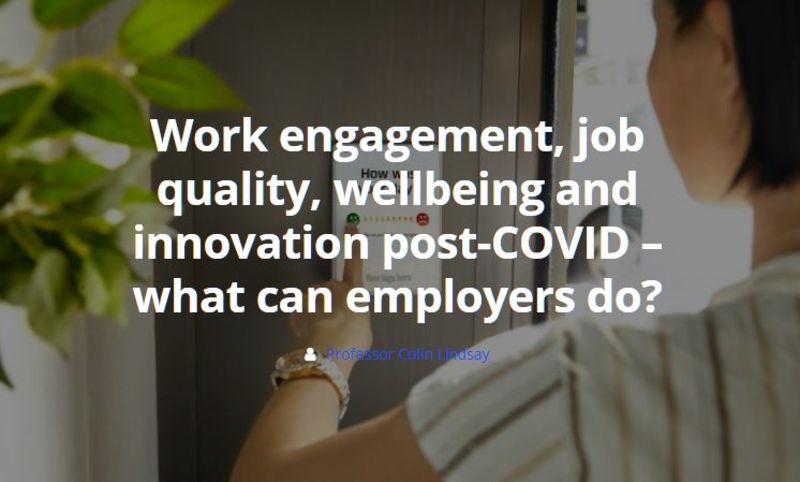Management strategies: the six questions you need to ask your staff
NatWest Business Builder: Self Awareness

If you really want to know what your team think of you and your business, these questions will help create a clear image.
1. What frustrates you about your role at the moment?
This question is a great one for SME owners to ask, says Peter English, a management development consultant and author of Tackling Difficult Conversations, because about 40% of people focus primarily on resolving problems in their lives. “These are people who are more aware of problems and get more annoyed by them,” he says. For the other 60%, it’s still a good question because it can unearth all kinds of issues.
English says many owners have a natural aversion to this line of questioning because they’ve been tutored in the ‘think positive’ school of thought. “They also fear that they won’t be able to address the issue that’s frustrating employees, or that the answer might be about their management style,” he says.
Why it’s worth asking: It should give owners a true snapshot of what their staff are thinking about their daily grind. “Owners won’t always be able to solve the problem, but they can often do something about it – maybe meeting staff halfway,” says English, who adds that bosses should try not to act defensively to employees’ suggestions.
2. What can I do better as the owner of the business?
This question – unthinkable to some bosses – turns the spotlight 180 degrees. Nelson Phillips, professor at Imperial College Business School in London says that feedback could be transformational if the owner is brave enough to listen.
“Owners often think that employees will feel free to speak up and tell them their ideas, observations, and suggestions, but this is very often not true,” he says. “Hierarchy always looks much more distant looking up than looking down.”
Why it’s worth asking: The team may well be holding back – especially true, says Phillips, if the founder is charismatic and full of self-belief. “Asking this question is, ironically, most useful for owners who are least likely to ask it,” says Phillips. “This is a version of the feedback paradox: the people who desperately need to receive feedback will do everything they can to avoid it.”
3. What do you think of the service we currently provide to our customers?
If the customer is king and your team’s on the frontline when it comes to dealing with them, getting staff to open up about their thoughts on the customer experience can be a valuable exercise. Caroline Dunk, owner of business consultancy the CDA Organisation, says this question often helps identify opportunities to improve customer service by making changes to key processes.
“I’m the only person in this business who can make blanket changes quite easily, so I tell the team that if something can be better, they should let me know”
Adam Greenwood, CEO, Greenwood Campbell
“We carried out some work for a mobile phone retailer to improve the service in their high-street stores; many of the changes that we made were based on ideas that came from their store staff when we asked them this question,” she says.
Why it’s worth asking: As well as unearthing new suggestions to improve the customer experience, Dunk says this question will help you to identify which members of the team really care. “Even if you don’t agree with every detail, a considered, passionate response will tell you that the individual is engaged with the goals of your organisation and wants to deliver an outstanding customer experience,” she says.
4. What can we as a company do better?
It seems such a blindingly obvious thing to ask the team, but Laura Jackman, assistant professor in entrepreneurship at Edinburgh Business School, says many owners simply never get round to it.
“The ‘we’ aspect of this is important because staff need to feel that it’s safe to be honest and not just say what they feel the boss wants to hear,” says Jackman, who cautions against asking this purely as a box-ticking exercise with nothing happening as a result. “When that happens it’s hugely de-motivating and staff quickly realise that their opinion isn’t valued,” she says.
Why it’s worth asking: “It’s open-ended, and in my experience frequently brings out both problems and opportunities,” says Jackman, who reiterates the importance of acting on at least some of the feedback. “I think you can ask staff as many questions as you like but if they really don’t feel ‘safe’ to answer honestly, it’s utterly pointless,” she says.
5. How can we improve working here?
Happy staff and a work culture in which they thrive are much-sought prizes for many owners, and Adam Greenwood, CEO and co-founder of digital agency Greenwood Campbell, says the best way to get there is to ask the team what they want.
“I’m the only person in this business who can make blanket changes quite easily,” he says, “so I tell the team that if something can be better, they should let me know.”
Why it’s worth asking: Staff are the lifeblood of any enterprise, and the happier they are, the more likely they are to propel a business forward. Don’t ask, and resentment and grievances may simmer. “Last year we took two members of the team away to a big digital conference in the US,” says Greenwood, “and some of those who didn’t get to go questioned why I only took those two. So this year I said: ‘OK, we’re going to take everyone.’”
6. Are you clear on the wider business objectives and your role in achieving them?
“A lot of business leaders make the assumption that employees know the business goals and the part they play – and that everyone is pulling in the same direction,” says business coach Rebecca Morley. Unfortunately, this isn’t always the case – as Morley discovered when she recently put this question to a senior leadership team. “In a number of cases there was some ambiguity around the goals and their role, and it can lead to inefficiency,” she says.
Why it is worth asking: “Sometimes the simplest questions can make the biggest difference,” says Morley. “Business is a machine, and everyone needs to be playing their individual role in making it move forward effectively. If someone is misaligned, it creates an issue not just for them but for the business and the people around them.”
We have a thriving and diverse community of thousands of entrepreneurs from multiple sectors, backgrounds and skill sets helping you to connect with the right people at the right time. No matter whether you’re looking to upskill, get feedback, engage with new people or simply observe, there’s something for everyone.
‘Want to learn more? Register for NatWest Business Builder to view all of their business development tools. Click HERE‘





















